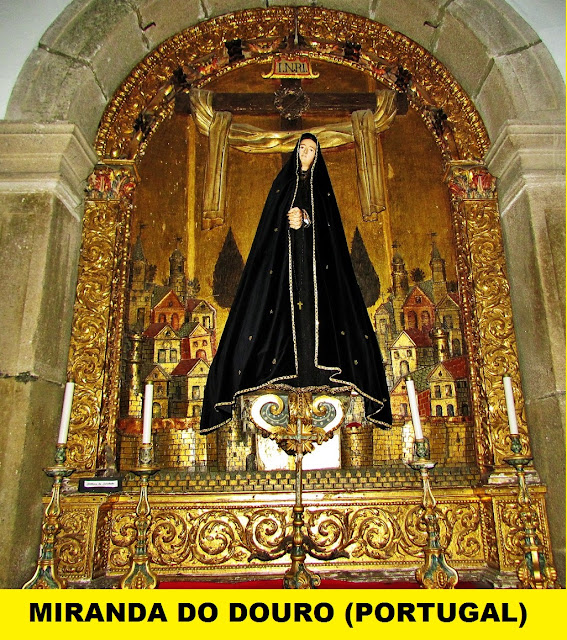MIRANDA DO DOURO
N 41.49164; W 6.27339
It is the seat of a municipality with an area of 487.18 km² and 7 482 inhabitants (2011), subdivided into 13 parishes. The municipality is limited to the northeast and southeast by Spain, to the southwest by the municipality of Mogadouro, and the northwest by Vimioso.
In this region, in addition to Portuguese, Mirandese is spoken, the second official language in Portugal and which is a local variant of the language of the ancient Kingdom of Leão.
Climate
Miranda do Douro has a Mediterranean climate of the Csb type, that is, with mild summers. Days with more than 30 ºC occur with some frequency, about 35 a year on average, and the summers are dry, but with cool nights. Winters are very cold and rainy, with days below 0 ºC occurring frequently, about 58 per year and more than half of January.
Castle explosion
Miranda de Duero was always a fairly important population, especially in the Middle Ages, due to its border situation, which gave it prominence in history as it was a battle site in the so-called Seven Years' War, which faced Spain and Portugal. , along with other nations. On May 5, 1762, the Spanish army left Alcañices with the aim of besieging Miranda. One of the Spanish projectiles fell into the explosives warehouse of the Miranda castle, where up to 250 barrels of gunpowder were stored. The explosion was of such magnitude that it was felt even in the village of Ifanes, within the municipality of Miranda, where the Irish army was located. The keep and the ramparts were blown up, killing many militiamen, soldiers, and city dwellers. The governor of Miranda had no choice but to surrender the city. The Spanish army aided the wounded and took more than 1,000 militiamen and 100 soldiers as prisoners. At the end of the war, the Spanish army would leave the city, in 1763, after a year of occupation.
Economy
A town on the border with Spain and with a passage over the Duero through the dam of the same name in the Portuguese hydroelectric section of the river, commerce is the basis of the local economy. Until the disappearance of borders in the European Union, Miranda de Duero was visited in search of textile products, coffee, and bronze artisan products, among others.
The commercial activity has been joined by the tourist development in search of the monuments of the city, the scenic environment of the Duero boxed in, or water sports in the reservoir.







































































